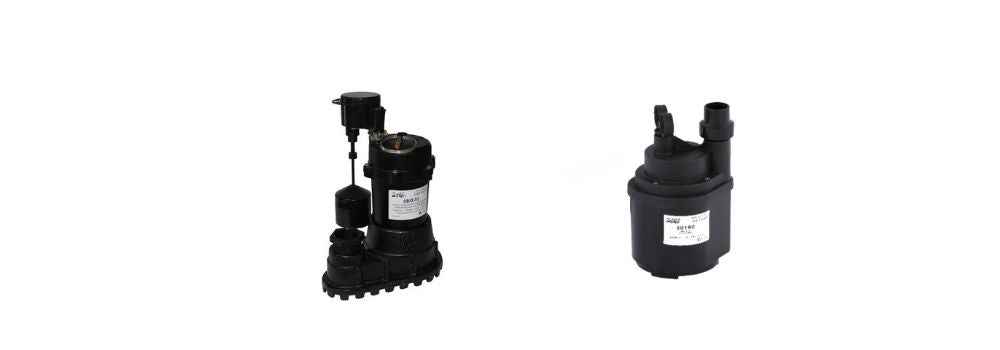
What are sump pumps and where they are used ?
A sump pump is a device that is used to remove water from a low-lying area, typically a basement or crawl space, where water tends to accumulate. Sump pumps are designed to prevent water damage to homes and buildings by keeping the area dry and preventing flooding.
Sump pumps are typically installed in a sump pit, a small hole dug in the lowest part of the basement or crawl space. The sump pit collects water that enters the area through foundation drainage, surface water, or groundwater. The sump pump is then activated when the water level in the pit reaches a certain height, and the pump removes the water and discharges it outside the building.
There are two main types of sump pumps: pedestal and submersible. A pedestal sump pump has a motor that sits above the sump pit, while the pump is located at the bottom of the pit. A submersible sump pump, on the other hand, has both the motor and the pump located within the sump pit. Submersible pumps are generally quieter and more efficient than pedestal pumps, but they are more expensive.
Sump pumps are commonly used in homes and buildings that are built on flat or low-lying areas with a high water table. They are also used in areas that are prone to heavy rainfall or flooding. Sump pumps can help prevent water damage to basements and crawl spaces, which can be costly to repair.
Sump pumps are also used in commercial and industrial applications, such as in factories, warehouses, and parking garages. In these applications, sump pumps are used to remove water from areas that are below grade, such as underground storage tanks and basements.
There are several factors to consider when choosing a sump pump for a home or building. These factors include the type of pump, the horsepower of the motor, the size of the sump pit, the flow rate, and the head pressure.
Type of Pump:
As mentioned earlier, there are two main types of sump pumps: pedestal and submersible. Pedestal pumps are less expensive, but they are also louder and less efficient than submersible pumps. Submersible pumps are more expensive, but they are quieter and more efficient than pedestal pumps.
Horsepower:
The horsepower of the motor determines how powerful the pump is and how quickly it can remove water from the sump pit. Generally, a higher horsepower pump will be able to remove water more quickly than a lower horsepower pump.
Size of the Sump Pit:
The size of the sump pit is also an important factor to consider when choosing a sump pump. The pump should be large enough to fit comfortably in the pit without being too cramped. A larger sump pit will also be able to hold more water, reducing the frequency of pump operation.
Flow Rate:
The flow rate of the pump is the amount of water it can pump in a given amount of time, typically measured in gallons per minute (GPM). The flow rate required will depend on the size of the area being pumped and the amount of water that needs to be removed.
Head Pressure:
Head pressure is the amount of pressure the pump can generate to move water through pipes and discharge it from the building. The head pressure required will depend on the height and distance the water needs to be moved.
Sump pumps require regular maintenance to ensure they are working correctly. Maintenance tasks include checking the pump's float switch, cleaning the pump and sump pit, and checking the discharge pipe for blockages.
In summary, sump pumps are devices that are used to remove water from low-lying areas, such as basements and crawl spaces. They are commonly used in homes and buildings that are built on flat or low-lying areas with a high water table or are prone to flooding.
